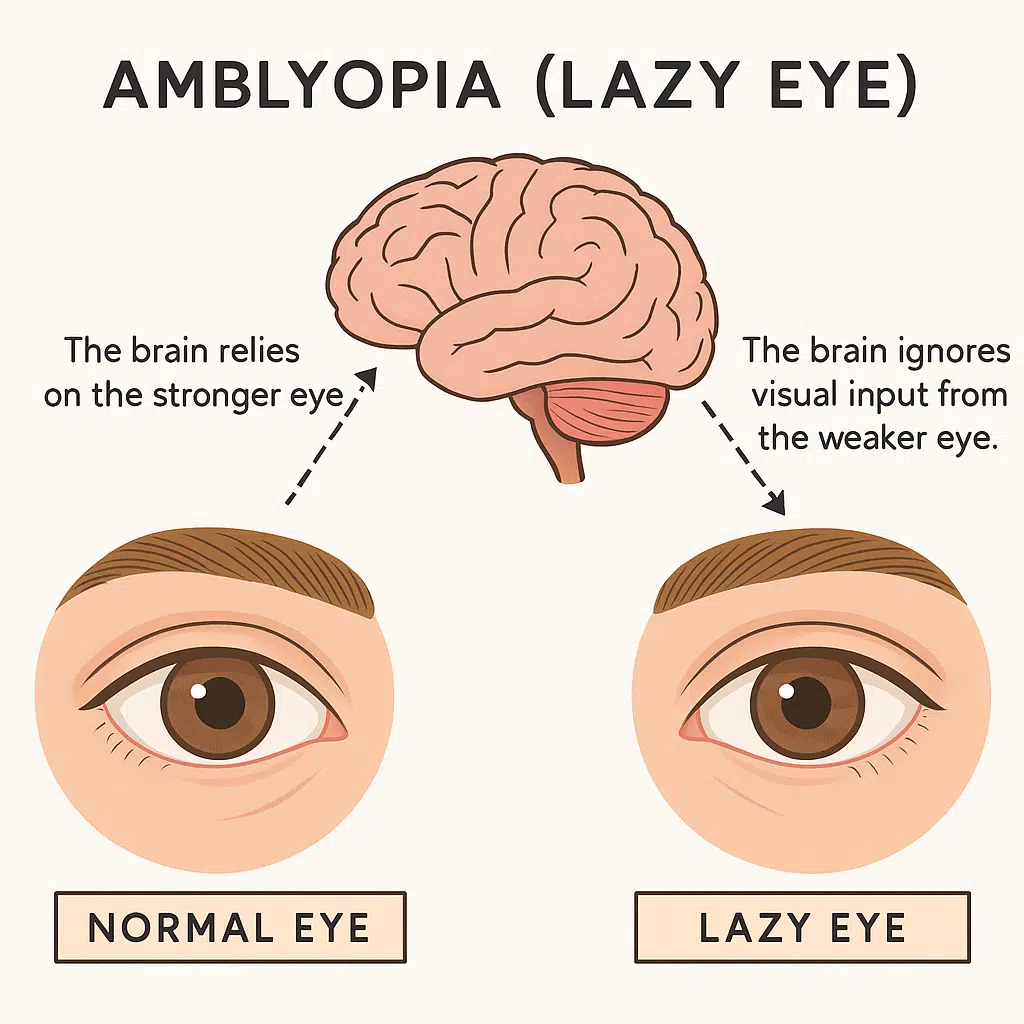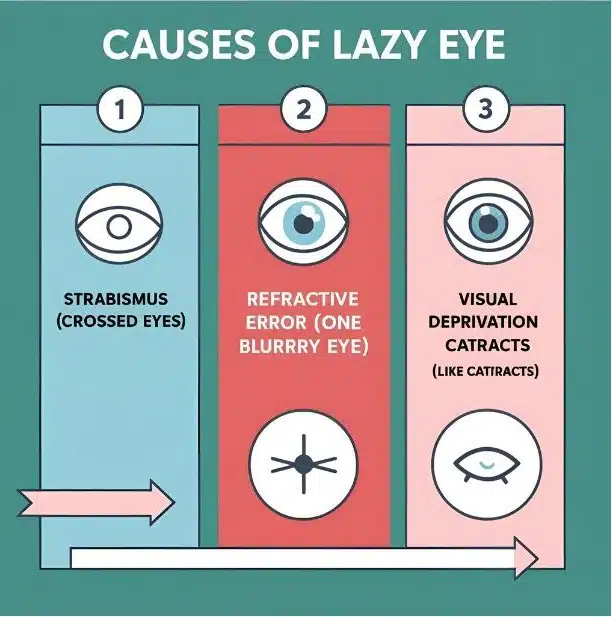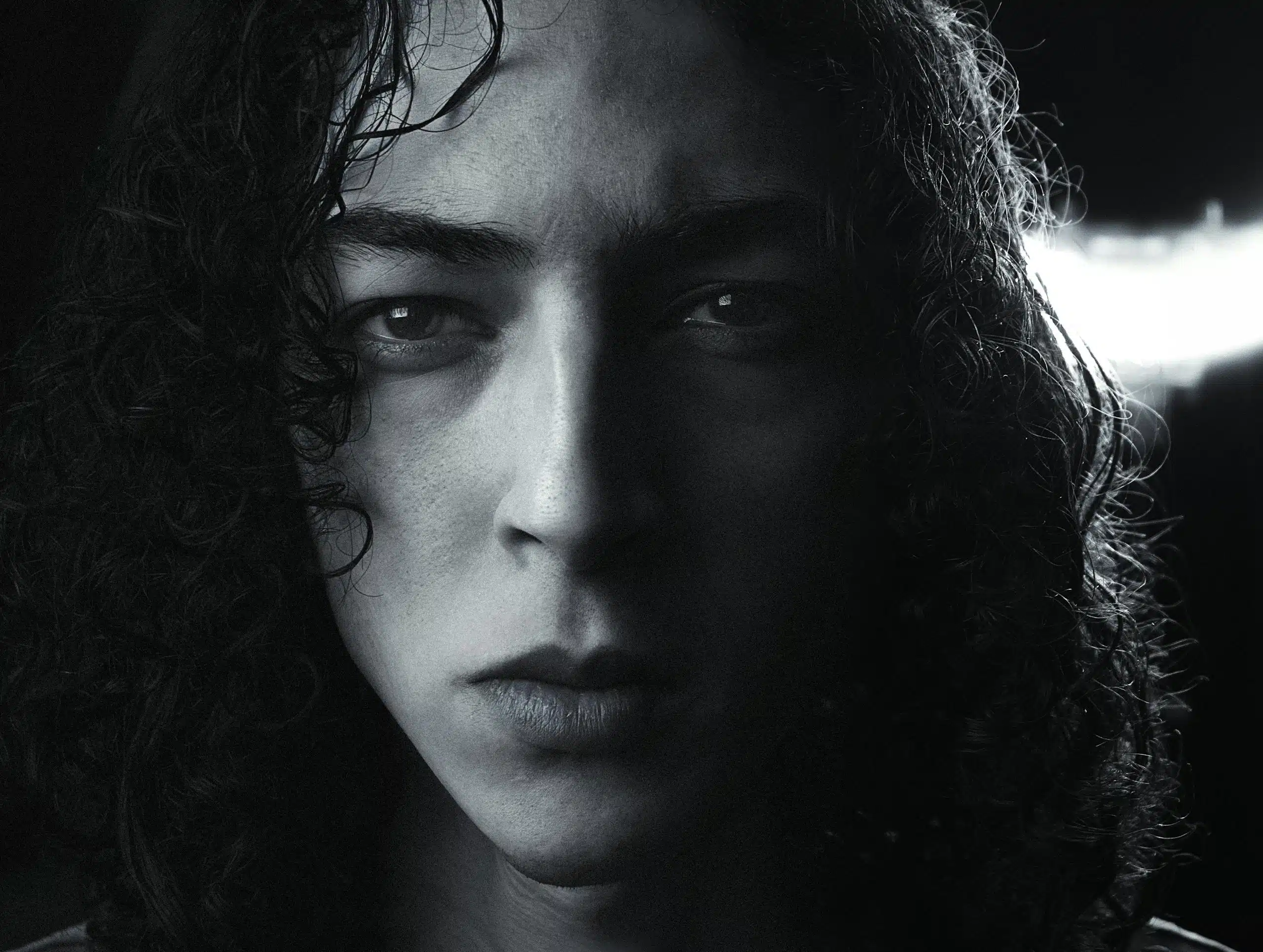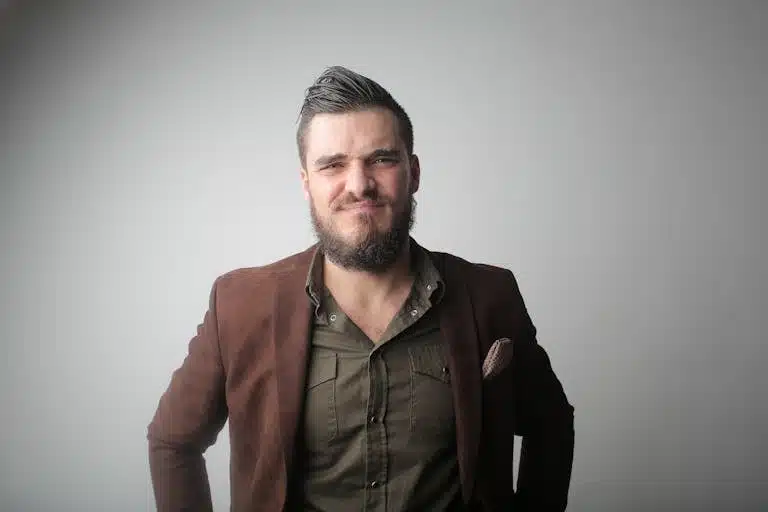When Is It Too Late to Treat Lazy Eye?
The appropriate time to start lazy eye treatment corresponds to before a child turns 7 years old. The correct treatment window for this condition starts before age 7 yet intervention at any stage is possible to manage lazy eye.
Amblyopia commonly known as lazy eye refers to a developmental vision disorder which affects proper eyesight formation in early childhood before brain eye preference starts to develop. Amblyopia stands as one of the main vision impairment causes for children and progress into permanent vision impairment when treatments occur past the appropriate timeframe.
In this blog, I will explain amblyopia, its treatment in different ages, and what to do when it’s Too Late to Treat Lazy Eye.
What is Lazy Eye (Amblyopia)?
Amblyopia, commonly known as “lazy eye” is one of the most prevalent vision disorders in children. The condition emerges because the brain selects to view through one eye more than through another until visual development becomes unequal between eyes. The brain along with the affected eye fails to coordinate effectively as a result of this condition.
Childhood amblyopia develops during early development stages where it stands among leading vision problems in children.
Critical Period
Professionals consider the treatment period for amblyopia to last from the moment of birth up to 7 years old yet the best success rate emerges between the ages of 2 to 5. The visual system demonstrates maximum susceptibility to therapy while developing during this particular period. The earlier the diagnosis and treatment, the better the outcome.
Treatments During the Critical Period:
- Patching (occlusion therapy): Healthcare providers use occlusion therapy with the strong eye to guide the brain into using the weak one.
- Atropine drops are administered in the strong eye to make vision blurry so the lazy eye develops proper usage.
- Glasses to correct refractive errors.
- Vision therapy or visual exercises.

Can Lazy Eye Be Treated After Age 7?
Yes — but with limitations.
Data demonstrates that treatment for amblyopia remains possible for older children as well as teenagers and even adult patients. The treatment process for this condition requires extended dedication as well as extended commitment while achieving results that are noticeably less powerful.
Treatment After Age 7:
- Following age seven the brain gives a delayed response to patching and atropine treatment.
- Computer-based exercises in combination with neuro-visual stimulation are used in vision therapy plans.
- Binocular therapy: The treatment technique called binocular therapy functions by making eyes collaborate rather than confining one eye from working.
Is There an Age When It’s Too Late?
Can Adults Still Be Treated?
Yes, The change in visual ability in adults undergoing recovery differs based on these elements:
- The severity of amblyopia
- Whether the condition was treated at all during childhood
- The presence of other eye conditions
- Personal commitment to therapy
People with untreated amblyopia in their adult years have decreased possibilities of attaining perfect vision. Such patients experience meaningful development combined with better fenestration between eyes.
What If the Lazy Eye Was Never Treated?
- The recovery of severe amblyopia becomes unlikely when this condition remains untreated into adulthood.
- However, treatment can still help:
- The treatment helps patients develop better eye teamwork and advanced depth understanding capabilities.
- Treatment improves both visual comfort while decreasing the strain on eyes.
- Enhance visual comfort and reduce eye strain.
The treatment objective evolves into optimizing what vision remains while enhancing the entire visual performance.

Read more: https://eyesonhunt.com/hooded-eyes-vs-hunter-eyes/
Factors That Affect Treatment Success
Multiple elements will decide the outcome of treating late amblyopia:
| Factor | Influence |
|---|---|
| Age | Younger patients have better chances, but adults may still respond to therapy. |
| Severity of amblyopia | Milder forms respond better to treatment. |
| Cause of amblyopia | Treating the underlying cause is essential. |
| Duration of the condition | Long-standing amblyopia is harder to reverse. |
| Patient motivation | Compliance with therapy significantly affects outcomes. |
Modern Advances in Treating Lazy Eye in Adults
The Rise of Neuroplasticity Research
Advances in neuroscience research have proven that amblyopia does not require an untreatable status for adult patients. The human brain continues development as an adult even though its speed of adaptation becomes slower in adult life.
Virtual Reality (VR) Treatments
- Two simultaneous eye training experiences are provided through the VR tools Vivid Vision and Luminopia.
- The VR devices maintain dual-eye activities along with binocular games for brain retraining.
- Such interventions operate as an energetic solution that specifically attracts users with technological backgrounds.
Mobile Applications and Therapeutic Games
- Amblyopia specific apps serve to enhance the function of the weak eye because they target its improvement.
- Rehabilitation tools offer patients interactive puzzles together with color-matching games as well as tracking tasks.
- Examples include games developed with input from ophthalmologists and neuro-optometrists.
Customized Vision Therapy
- The design of customized therapy plans falls within the competence of a neuro-optometrist.
- Patients will perform therapeutic workouts initially at the office and then under home supervision.
- The treatment devises methods to remedy amblyopia alongside treating any associated vision processing or coordination defects.
Final Thoughts
The treatment of lazy eye achieves maximum success before children turn seven but successful treatment remains accessible when therapy begins after age seven. Irrespective of your current age group which could include teenager or young adult or adult in their 40s or 50s treatment remains beneficial for you.
Here’s what you should remember:
- Treatments for lazy eye will be more successful when you start receiving medical intervention sooner.
- The key requirements for patients over seven years old consist of continuing treatment with full dedication.
- New technologies have revolutionized adult treatment options.
- It’s rarely “too late”—there’s always potential for at least partial recovery.
Parents should avoid postponing treatment for their children. Adults who suffer from lazy eye should refuse to give up on their treatment.







